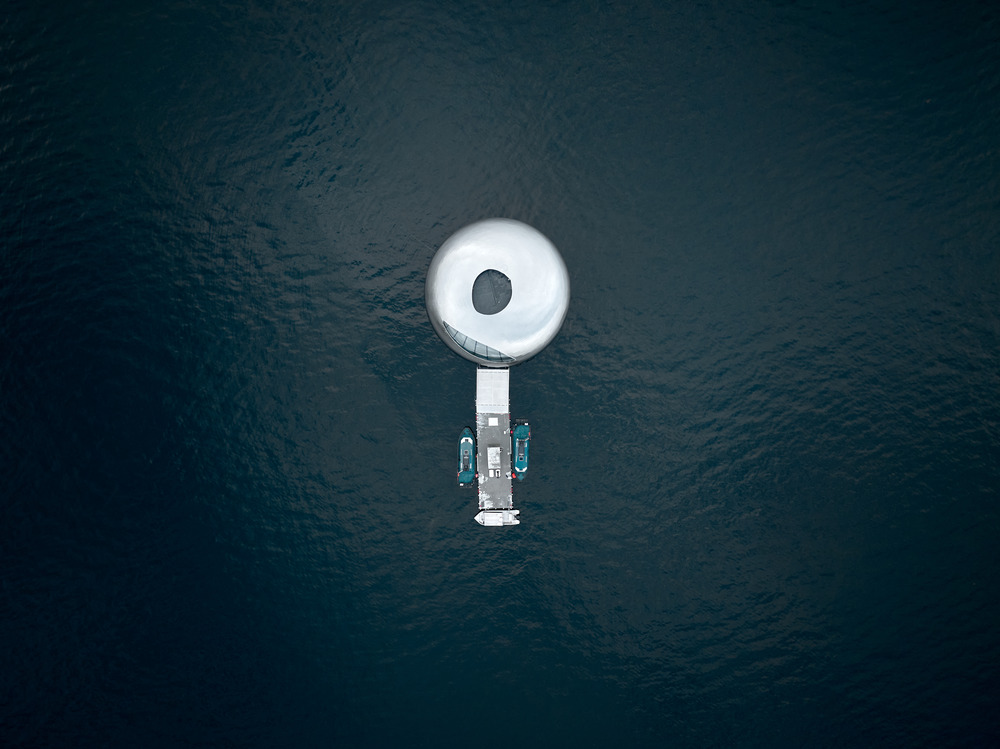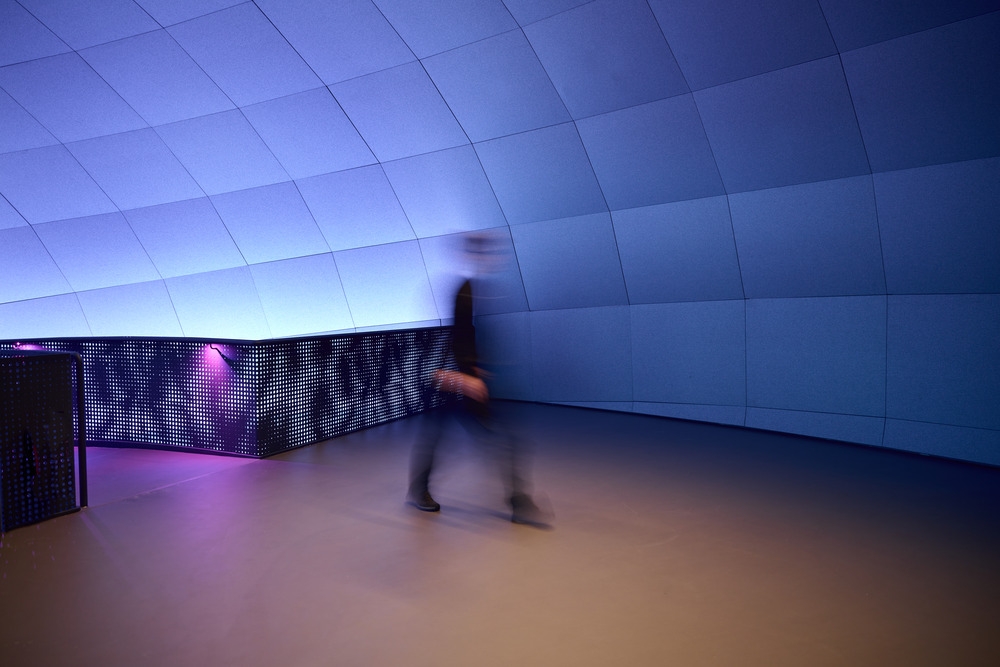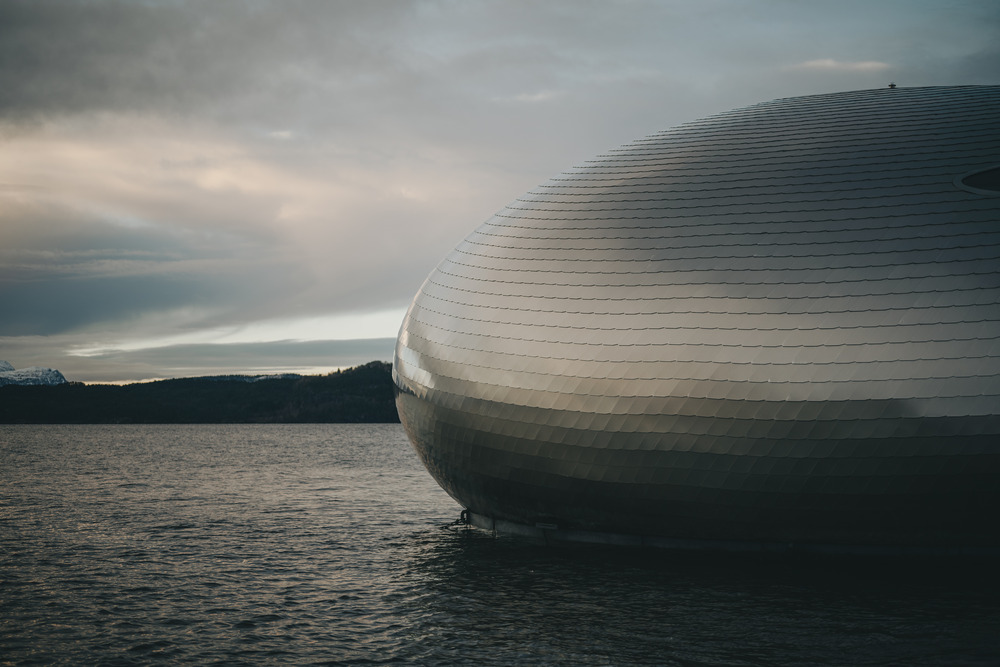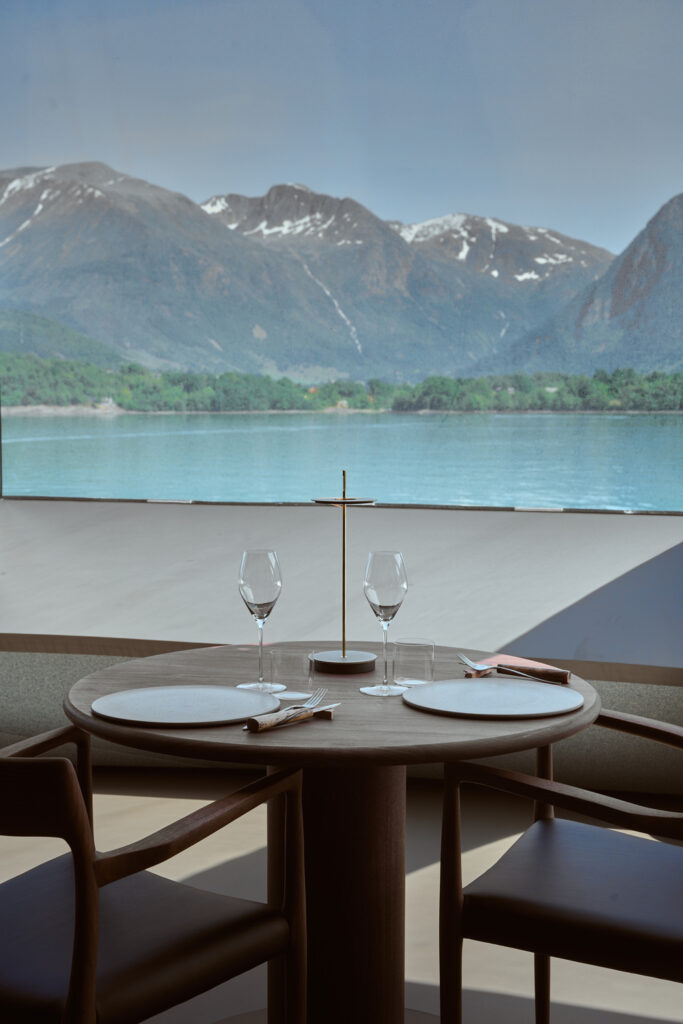In the heart of the Hardanger fjord, a glittering orb floats on the water, its silvery structure reflecting the wild beauty of the surrounding Norwegian landscape. This is not a scene from a science fiction tale, but the setting for an extraordinary culinary journey. Welcome to Iris, a restaurant that has taken its guests on an expedition dining experience like no other since its opening in late spring 2023.

Photo credit: Sebastian Lamberg Torjusen

Photo credit: Håkon Settemsdal
Nestled inside the stunning Salmon Eye, a floating experience centre dedicated to sustainable marine life, Iris is a marvel to behold. The centre’s design, a double-curved ellipsoid, is inspired by the shape of a fish eye, creating a unique architectural marvel that seems to hover over the fjord’s surface.
At the helm of Iris is Danish chef Anika Madsen, renowned for her passion for discovering new ingredients from the ocean and her commitment to sustainability. Madsen’s culinary journey has taken her through some of Copenhagen’s top kitchens, earning her the nickname “the umami queen”. Now, she brings her innovative approach to Iris, crafting a menu that reads like a story – a narrative about the challenges and threats to the global food system, and the potential solutions that lie in future innovations.
The Iris experience is not just about the food, but also about the journey. Accessible only by boat, an evening at Iris is an expedition in the truest sense of the word. Guests traverse the fjord by electric boats before settling in for an 18-course dinner in a dining room with panoramic views of the fjord, glaciers, and mountains.
Iris is more than a restaurant; it’s a vision of the future of aquaculture, a testament to the vast potential of the oceans, and a tribute to the unique farmers, fishermen, and producers that provide the ingredients for the dishes. It’s a place where gastronomy and activism blend on a global scale, presenting the most local ingredients possible in every dish.

Photo credit: Tobias Lamberg Torjusen

Photo credit: Tobias Lamberg Torjusen
Future is Floating in the Fjords
The design of Iris is a testament to the power of imagination and the potential of sustainable architecture. Nestled within the Salmon Eye, a floating experience centre, Iris is housed in a structure that is as much a work of art as it is a marvel of engineering.
The Salmon Eye’s double-curved ellipsoid design, inspired by the shape of a fish eye, creates a unique architectural spectacle that seems to hover over the fjord’s surface. This glittering, silvery orb is exposed to the wild elements of nature, surrounded by the spectacular Norwegian landscape with fjords, mountains, and glaciers.
Visually stunning, the Salmon Eye is one of the world’s largest enterable floating art installations, with a weight of 1,256 tonnes, a diameter of 25 meters, and an area of 1,000.6 m² divided over four levels, one of which is underwater. This design is not only aesthetically pleasing but also serves a purpose – to inspire and inform the world on how to better feed the planet with sustainable seafood.
The design of Iris is not just about aesthetics; it’s about creating an immersive experience that connects guests with the surrounding environment. The dining room offers panoramic views of the fjord, glaciers, and mountains, creating a dining experience that is as visually stunning as it is gastronomically satisfying.
The design also reflects Iris’s commitment to sustainability. Accessible only by electric boats, the journey to Iris is a testament to the potential of sustainable transportation. Inside, every detail is carefully considered to minimize environmental impact and celebrate the natural bounty of the Hardanger fjord.
The design of Iris is a vision of the future of aquaculture, a tribute to the vast potential of the oceans, and a testament to the power of sustainable design. It’s a place where the boundaries between architecture, gastronomy, and activism blur, creating an experience that is as thought-provoking as it is enjoyable.

Photo credit: Tobias Lamberg Torjusen

Photo credit: John Asle E. Hansen
The Iris Project
The Iris Project is a bold and visionary venture that aims to redefine the dining experience while addressing some of the most pressing challenges of our time. It’s a project that combines gastronomy, activism, and innovation, all set against the stunning backdrop of the Hardanger fjord.
At the heart of the Iris project is the Salmon Eye, an experience centre dedicated to inspiring and informing the world on how to better feed the planet with sustainable seafood. The Salmon Eye is one of the world’s largest enterable floating art installations, a testament to the power of sustainable design and the potential of the oceans.
Inside the Salmon Eye is Iris, a fine dining restaurant that takes guests on an unforgettable culinary journey. Headed by Danish chef Anika Madsen, Iris presents a menu that tells a story about the challenges and threats to the global food system, and the potential solutions that lie in future innovations.
But the Iris project is not just about creating a unique dining experience; it’s about making a difference. It’s about showcasing the potential of sustainable seafood, promoting the use of local ingredients, and inspiring people to explore the possibilities below the surface of the sea.
One of the unique features of the Iris project is the movie about food consumption that is shown to guests. This movie highlights the fact that while 71% of the Earth’s surface is covered with water, only 2% of the world’s per capita food consumption originates from the sea. With the UN estimating that we will need 56% more food to feed 10 billion people by 2050, the movie underscores the urgent need for sustainable food production and the potential of the oceans to meet this demand.
The Iris project is a testament to the vision of Eide Fjordbruk, the world’s first and only CarbonNeutral® certified salmon producer. It’s a project that embodies their commitment to sustainability, innovation, and quality, and their belief in the power of food to inspire change

Photo credit: Tobias Lamberg Torjusen

Photo credit: Tobias Lamberg Torjusen
A New Dawn in Sustainable Dining
As the sun sets over the Hardanger fjord, casting a golden glow over the silvery orb of the Salmon Eye, guests at Iris embark on a culinary journey that is as much about the future as it is about the present. Iris is not just a restaurant; it’s a vision of what dining could be – a place where gastronomy, activism, and innovation come together to create an experience that is as thought-provoking as it is enjoyable.
The Iris project is a testament to the power of imagination and the potential of sustainable seafood. It’s a project that challenges us to rethink our relationship with the oceans, explore the possibilities below the surface, and imagine a future where sustainable seafood is not just a niche market, but a cornerstone of global food security.
In Iris, we see a future where dining is not just about satisfying our hunger, but about engaging with the world around us, about understanding the challenges we face, and about exploring the solutions that lie within our reach. Through this fisheye, we see the steps towards a more sustainable future.
Video credit: Neil Bromhall









